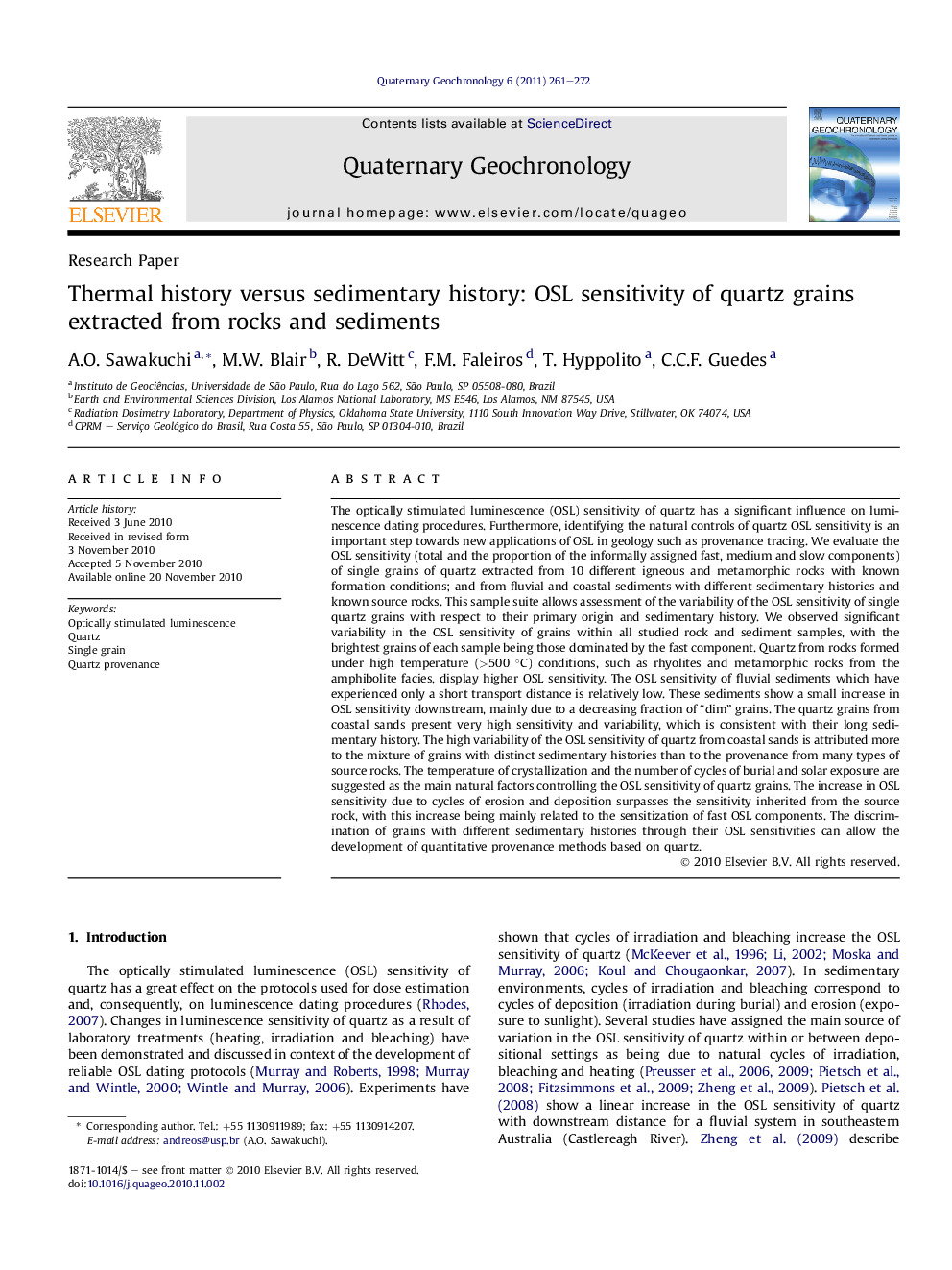| Article ID | Journal | Published Year | Pages | File Type |
|---|---|---|---|---|
| 4725365 | Quaternary Geochronology | 2011 | 12 Pages |
The optically stimulated luminescence (OSL) sensitivity of quartz has a significant influence on luminescence dating procedures. Furthermore, identifying the natural controls of quartz OSL sensitivity is an important step towards new applications of OSL in geology such as provenance tracing. We evaluate the OSL sensitivity (total and the proportion of the informally assigned fast, medium and slow components) of single grains of quartz extracted from 10 different igneous and metamorphic rocks with known formation conditions; and from fluvial and coastal sediments with different sedimentary histories and known source rocks. This sample suite allows assessment of the variability of the OSL sensitivity of single quartz grains with respect to their primary origin and sedimentary history. We observed significant variability in the OSL sensitivity of grains within all studied rock and sediment samples, with the brightest grains of each sample being those dominated by the fast component. Quartz from rocks formed under high temperature (>500 °C) conditions, such as rhyolites and metamorphic rocks from the amphibolite facies, display higher OSL sensitivity. The OSL sensitivity of fluvial sediments which have experienced only a short transport distance is relatively low. These sediments show a small increase in OSL sensitivity downstream, mainly due to a decreasing fraction of “dim” grains. The quartz grains from coastal sands present very high sensitivity and variability, which is consistent with their long sedimentary history. The high variability of the OSL sensitivity of quartz from coastal sands is attributed more to the mixture of grains with distinct sedimentary histories than to the provenance from many types of source rocks. The temperature of crystallization and the number of cycles of burial and solar exposure are suggested as the main natural factors controlling the OSL sensitivity of quartz grains. The increase in OSL sensitivity due to cycles of erosion and deposition surpasses the sensitivity inherited from the source rock, with this increase being mainly related to the sensitization of fast OSL components. The discrimination of grains with different sedimentary histories through their OSL sensitivities can allow the development of quantitative provenance methods based on quartz.
